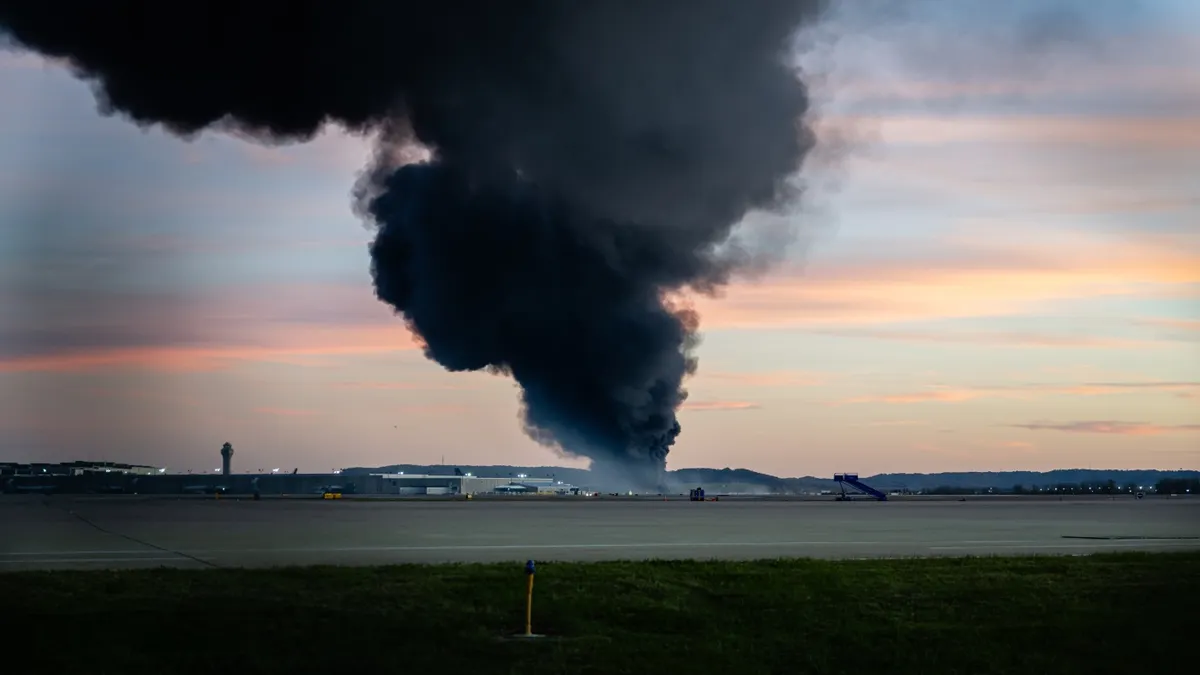
Federal investigators are delving into the tragic UPS cargo plane crash in Kentucky, which resulted in the loss of at least 12 lives and injuries to nearly 20 others. The investigation, led by the National Transportation Safety Board (NTSB), will focus on the aircraft's maintenance records and data recorder after it was discovered that one of the plane's engines detached during takeoff. The crash, which occurred on Tuesday in Louisville, not only resulted in fatalities but also led to a massive fire and the closure of the largest UPS package distribution hub.
Governor Andy Beshear stated on Wednesday that a few individuals remain unaccounted for, prompting search crews to continue their efforts in an industrial area adjacent to the airport where the plane struck several businesses. Initial findings from the NTSB indicate that the left wing of the aircraft caught fire as it was taxiing for takeoff, leading to the engine falling off the plane. The fallen engine was later located on the ground beside the runway, raising questions about the plane's airworthiness.
The McDonnell Douglas MD-11, which was built in 1991, is equipped with three engines: one on each wing and another located at the tail. Despite the loss of one engine, aviation experts, including John Cox, CEO of Florida-based Safety Operating Systems, noted that the plane should still have been capable of taking off if the remaining engines were functioning properly. However, issues with the other engines or the aircraft's overall condition could have impeded its ability to ascend.
Cox and other aviation experts have drawn parallels between this incident and a notorious crash that occurred nearly 50 years ago at Chicago's O'Hare Airport, which claimed 273 lives when General Electric engines detached from a plane. Investigators at that time attributed the disaster to inadequate maintenance practices. The NTSB plans to thoroughly review the maintenance history of the UPS aircraft, alongside the engines and other components, to determine if similar deficiencies were present. According to UPS, the flight had not been delayed and no maintenance was conducted immediately prior to takeoff.
Eyewitness accounts and video footage indicate that the plane struggled to gain altitude as flames engulfed its left side. The aircraft, which was fully loaded with fuel and en route to Honolulu, caused significant damage by shredding the roof of a large structure before erupting into flames. Aviation attorney Pablo Rojas described the situation as perilous, noting that the plane acted almost like a bomb due to its fuel load. It remains uncertain whether the pilot was aware of the flames, and if they did notice the fire, aborting the takeoff could have posed additional risks.
The crash resulted in a path of destruction through an area filled with scrap yards and UPS facilities, narrowly avoiding a restaurant and coming to rest near a Ford auto assembly plant where many employees were present. Fire officials reported that the blaze extended nearly a city block and obliterated much of the plane's fuselage. As a result of the incident, operations at UPS' massive sorting facility, known as UPS Worldport, were halted on Wednesday. This hub typically manages 300 flights daily and processes over 400,000 packages every hour.
While package sorting at the UPS facility remains suspended, commercial passenger flights at Louisville Muhammad Ali International Airport resumed on Wednesday morning, albeit with limited operations as only one runway was initially open. The full extent of how the crash will impact shipping logistics and operations in the region remains to be determined.